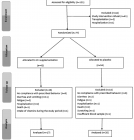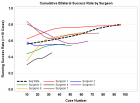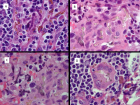Table of Contents
Prediction of neonatal and maternal index based on development and population indicators: a global ecological study
Published on: 7th December, 2021
OCLC Number/Unique Identifier: 9359437629
Introduction: Although worldwide maternal and neonatal mortalities have decreased, but Achieving sustainable development goals remains an unfinished agenda and global challenge. This study aimed to predict neonatal and maternal index based on development and demographic indicators.Methods: In this ecologic study, the dependent variables were Maternal mortality ratio (MMR), Neonatal mortality rate (NMR), and Under 5 Mortality Rate (U5MR) and the independent variables were Gender gap index (GGI) and its four components, human development, life expectancy, total fertility rate, and population growth. Data conducted using international secondary data published data bases of health metrics from 2016 to 2018 in 149 countries from WHO (World Health Organization), World Economic Forum, UNICEF (United Nations Children's Fund), and UNDP (United Nations Development Programme). Data analysis was performed using correlation model in Stata version 14.1 software.Results: In this study, economic participation and total fertility rate are positively and educational attainment, Human Capital Index and life expectancy are negatively associated with MMR. Human Capital Index, Educational attainment, and Life expectancy are negatively associated with NMR. Economic participation and total fertility rate are positively and educational attainment, Human Capital Index and life expectancy are negatively associated with U5MR. Discussion: To reduce the maternal and neonatal mortality rate, it is important to pay attention to indirect causes such as equal conditions for men and women to demographic and population indices such as economic participation, educational attainment, Human Capital Index and life expectancy.
A Genetic study in assisted reproduction and the risk of congenital anomalies
Published on: 12th October, 2021
OCLC Number/Unique Identifier: 9305465911
In vitro fertilization is one of the most common and effective procedure for thousands of couples worldwide who want to have a child and are unable to do so for various reasons. Diverse studies show that couples who conceive naturally after one year of trying had newborns with an increased risk of prematurity and low birth weight, compared with couples who conceived before completing one year of trying. Children from assisted reproduction (AR), have a 30% increased risk of prematurity and low birth weight, compared with children from infertile fathers. Regarding the conflicting results the present study aimed to record the frequency of genetic, congenital anomalies in children and adolescents who had examined in the last decade to the Clinical Genetics Clinic of the National and Kapodistrian University of Athens whose mothers had undergone assisted reproduction. The research process was conducted at the "Aghia Sofia" Children's Hospital based in Athens. However, the cases that were studied came from all over Greece. Initially, the researcher recorded the cases that came to the clinic of Clinical Genetics and whose conception occurred after technical assisted reproduction. After telephone communication and the consent of the parents, a live appointment was scheduled. In this meeting-interview all the provisions of the investigation and the protocol were asked and some elements of the medical history of the cases were confirmed. The total sample included 230 children and adolescents. The resulting data were recorded on a printed form/questionnaire. Then, they were registered electronically in the program SPSS 25.0 (Statistical Package for Social Sciences) with a specific unit code for each case/patient, followed by the processing and statistical analysis of the data as well as the recording of the results. The gender of the participants was male for 118 participants (51.3%) and 112 females (48.7%). Mean and standard deviation (SD) of maternal, paternal (at the time of delivery) age was equal to 36.38 (5.94) and 39.94 (6.58) respectively. The observed abdormalities were 35.53% psychomotor retardation, 23.68% facial abnormalities, 23.68% spinal cord abnormalities, 21.05% morphological abnormalities, 20.61% short stature, 19.74% developmental disorders, 19.30% heart disease, 16.67% neurological diseases, 14.47% genetic syndromes, 11.40% genital abnormalities, 8.33% limb abnormalities, 7.46% dermatological abnormalities, 6.14% eye abnormalities, 6.14% hypothyroidism, 5.70% endocrine disorders, 5.26%otolaryngology abnormalities, 2.63% disease of kidney, intestine, 2.19% vascular malformations. Regarding the karyotype chromosome analysis by G-banding technique, from the 230 children in: 24 (10.43%) a pathological result was found, in 158 children (68.70%) it was found normal (46, XX or 46, XY by case) without other findings, while in 48 children (20.87%) the test was not performed for various reasons. Regarding the results of molecular analysis (DNA) from the 230 children, in 50 (21.74%) a pathological finding was found, in 56 children (24.35%) no abnormalities were found and in 124 children (53.91%) no molecular analysis was performed for various reasons. In conclusion, the sample of this descriptive study is characterized as uniform in terms of the method of assisted reproduction since 96.24% had followed the classic IVF. Full-term pregnancy was associated with the appearance of malignancy and head morphological abnormalities (64.6%), normal pregnancy was associated with genetic syndromes (18.2%) and facial abnormalities (11.1%). It is recommended the screening oocyte and sperm donors in order to help protect the safety and health of donors, recipients, and future offspring. The present study confirms the association of the presence of congenital anomalies after in vitro fertilization (IVF). However, the absolute risk of developing severe dysplasias after an IVF procedure is limited.

If you are already a member of our network and need to keep track of any developments regarding a question you have already submitted, click "take me to my Query."


















































































































































